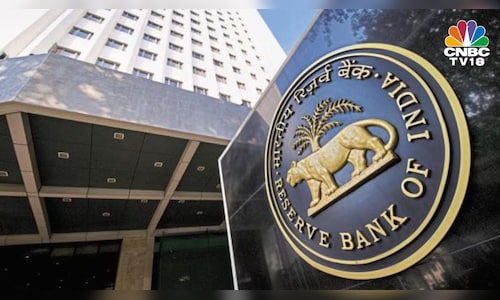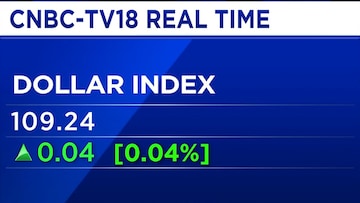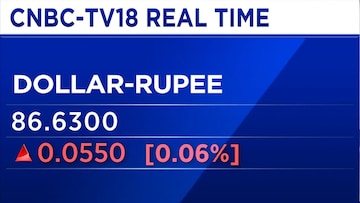
“In India, we have been arguing about a rate cut for a long time, given that we have expected growth to slow down significantly, and inflation to come down. Core inflation already has been languishing for a very long time, so there is no reason not to have a rate cut,” he said in an interview with CNBC-TV18.
Aziz believes that the US dollar has so far priced in only 6-7% of the potential tariff increase by the US.
“We think that the tariffs and immigration will be changed dramatically, and then later on, both tax policies and deregulation,” he said.
He predicts US tariffs on China could rise from the current 20% to 60%, with Chinese transshipments through countries like Malaysia and Vietnam likely to be targeted.
This are the edited excerpts of the interview.
Q: US President Donald Trump has posted on his social media platform that he will create an External Revenue Service responsible for keeping tabs on tariffs. Should we brace for worse or things will actually settle down once he is in office?
A: We have been tracking this since the elections are over, and it is possible that President Trump will come out to be very different from his rhetoric during the campaign. I am neither brave nor imaginative enough to stand second-guess President Trump, so we are taking him literally.
As far as taking him literally is concerned, we think that the tariffs and immigration will be changed and change dramatically, and then later on, both tax policies and deregulation.
So on tariffs, we believe that China, Malaysia, and Vietnam through which Chinese transshipment goes through will be targeted. The tariff in China is 20% at present, we expected it to go to 60%. Why 60% that is because President Trump, during this campaign, mentioned 60% several times.
The news reports, etc, that have come since the election suggests that that may not be the only objective of the tariffs. Tariffs could also be driven by the objective of raising revenue such that the tax cuts that he is proposing can be funded. Now, if that is the case, then our sense is that on January 20, or that week, you are probably going to get many more countries under the tariff umbrella than just China and Malaysia and Vietnam.
Also Read | This $105 bn fund manager sees large-caps delivering better returns than small or mid-caps over 3 years
Q: Even if it plays out literally as what he has been saying, hasn’t this been priced into the market, with the dollar rushing to 110?
A: US dollar index (DXY) for example, at best can get about 6-7% of tariffs being priced. That’s it. Any kind of forex arithmetic, if you break it down between the growth differential between US and the rest of the world, the interest rate differential especially after the change in the Fed call that we have done after the non-farm payroll came out last week. If you take those two factors, which are the usual drivers of dollar strength. At best, you can say that the market is pricing and maybe 6-7% of tariff increase. That’s the extreme.

Q: What does it mean for the dollar, the DXY?
A: I don’t think any of my strategists are willing to price it. These are scary numbers.
Q: The Indian rupee has weakened. We are around ₹86-87 per dollar. We are 15 days into the calendar year. What happens now? What are you pricing with regard to the RBI? Earlier we were factoring that maybe in February we see some kind of action which could get pushed back a little bit.
A: There are two parts to it. One part of it is that the real effective exchange in India has gone up significantly over the last two years. So there is the need for the exchange rate to depreciate in order to bring back the real exchange rate to more normal levels. So that is one driver.
Oil prices, the current account deficit, and the outflow of foreign portfolios are the other drivers. But in the event we do get these kinds of tariffs being imposed, we don’t know what it is. If you go literally by what President Trump has said, it is going to be a pretty high rate in the rest of the world, as well as in China. So what happens in the Indian rupee depends almost entirely on how the dollar-China Renminbi (CNY) reacts. If the dollar CNY reacts by depreciating another 5% or more from here onwards, then the rupee is appreciated even more against its biggest trading partner, which means a real effective exchange rate gets appreciated even further, making the need for a nominal depreciation even that much greater.

Therefore, the pressure on the rupee to depreciate becomes even greater. I won’t be able to tell you what the number is, but that is the direction.
Q: What is the feed through to inflation, and then on US inflation and what happens to the interest rates in the US?
A: Let us start with the first question, inflation. To minimise the impact of inflation, chances are that whatever increase they have, this universal tariff increase is not going to be uniform across all goods. For consumer goods, the tariff will be less, for intermediate goods, the tariffs will be much higher to get a 10% average effective rate. That minimises your impact on inflation. So that is the way we think it will be played out.
Also Read | Axis AMC expects derating in some mid- and small caps
If indeed you are getting a universal tariff, it is not going to be a uniform 10% in everything, consumer goods less, intermediate goods more. So such a move can, at least in the first rounds before the second round effects take place, minimise or limit the amount of increase on inflation in the US.
Q: Is there a chance that there could be a rate hike by the Fed?
A: We think the rate hike is extremely unlikely. You need the core Central Product Classification (CPC) to move above three and remain there and things like that, which looks unlikely.
On the other hand, we have already taken out all rate cuts for the first half of the year. We just have two more rate cuts, one in June, and the other in September, and that is it. So the terminal rate is four. Not too long ago, we were talking about a terminal rate of around three. This was probably three months back, so there has been a significant shift.
Now, what does the Fed do? If you look at the minutes of the December meeting, there was already a sense that the Federal Open Market Committee (FOMC) members were already looking at the impact of these tariff increases, on immigration. We didn’t even talk about immigration, which could be another hit to inflation already there. So just to give you a sense, if you look at the Suspended Counterparty Program (SCP), in 2025 it raised growth just by 0.1 – 2 to 2.1. they reduced unemployment just by 0.1 – 4.3 to 4.2 and raised inflation almost about 0.5.
Q: Your expectations for the US 10-year yield, as well as the path ahead for the RBI?
A: On the US 10-year, the business cycle, part of it has already been priced in, i.e. the Fed is only going to go at best to four, and you are not going to get a rate cut more than two rate cuts for the rest of the year. That part has been priced in. What has not been priced in is the impact of tariffs and immigration on inflation and, more importantly, the size of the tax cuts and therefore the size of the fiscal deficit, those haven’t been priced in.
So if you have negative shocks on those three things, you could see the 10-year move up,
In India, we have been arguing about a rate cut for a long time, given that we have expected growth to slow down significantly, and inflation to come down. Core inflation already has been languishing for a very long time, so there is no reason not to have a rate cut. We do have a rate cut in February, and we are still sticking with that there will be a rate cut in February.
Also Read | CLSA not expecting big returns in 2025, sees single-digit gains for Indian market
If there is turmoil in the Fx market, then the rate cut gets pushed off. So far, I don’t think a 3% depreciation is enough to take away that rate cut by a depreciation higher than that, possibly the February rate cut gets pushed up. But if we do have a rate cut in February, in fact, we have 100 basis points (bps) of a rate cut in 2025.
For more details, watch the accompanying video
Catch all the latest updates from the stock market here



